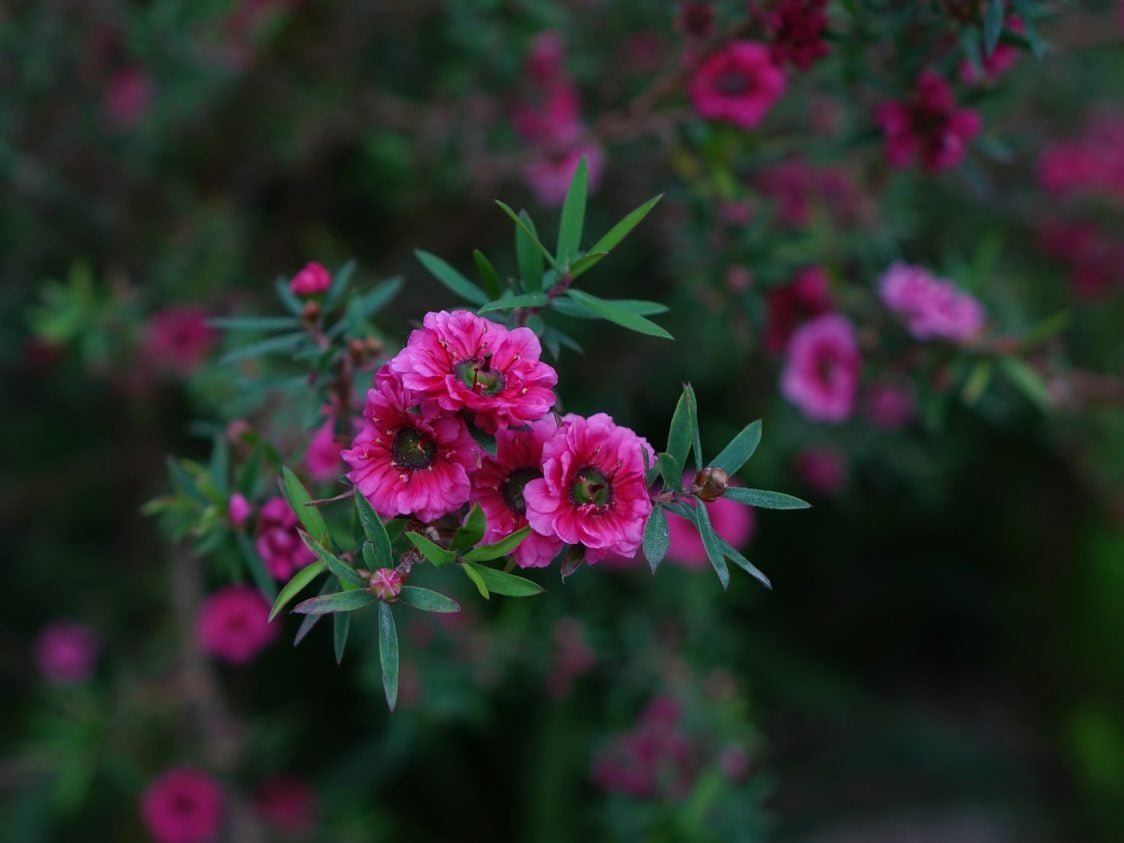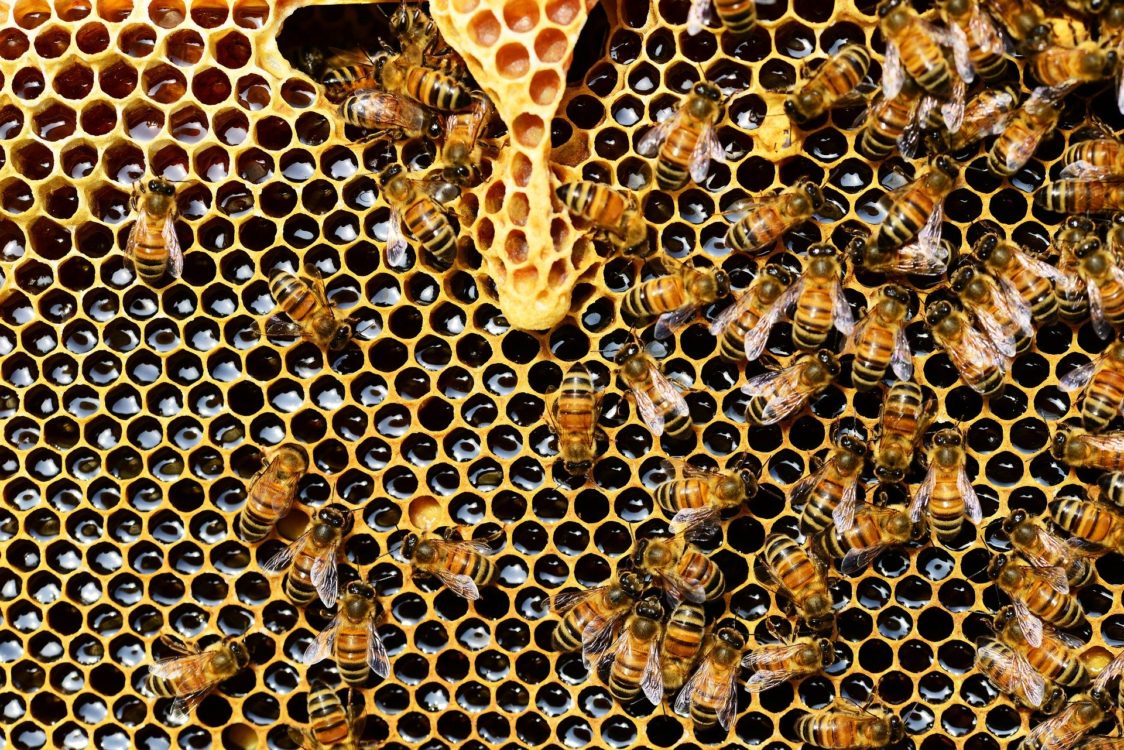Table of Contents
Do you know Manuka honey and its effects on the body? It is very popular in the world, despite its slightly higher price. This is due to its antibacterial properties, which make it different from regular honeys. Discover its benefits, which are not connected only to sweetening.
Honey – an ancient miracle with many benefits
Sweetener with a rich tradition
Beekeeping and honey production are as old as humanity itself. We probably won’t know the exact year and the nation that started beekeeping. There are several resources on the Internet that give us various answers to the oldest mention of beekeeping. Somewhere it is Egypt and Spain – 6000 – 5000 BC, elsewhere it is today’s territory of Turkey – 9000 years BC. In any case, beekeeping has been a part of our civilization for several millennia. It was known by the Romans, the Greeks, and was used for cooking or seasoning. For example, the Greeks mixed it with cheese and made the cheesecake known today. With Christianity, the production of honey and wax increased even more due to the demand for candles. Today, perhaps, there is no man or nation who does not know this golden miracle, and for many people it is an integral part of the household. [1] [2] [3]

Benefits of consuming honey
Consumption of honey has other benefits in addition to exceptional taste. The composition of honey is primarily a source of carbohydrates, sugars in honey are sweeter than artificial sweeteners and fructose has the largest share in it. You will also find in it several vitamins and minerals, such as vitamin C, vitamin B2 and B3, pantothenic acid or magnesium, calcium, iron, potassium, and copper. In addition to a source of nutrients, natural honey is useful as a source of energy for athletes, it contains antioxidants and supports digestion thanks to enzymes. [4]
Scientists have also examined the use of honey and its benefits for humans, and many researches have supported several benefits of honey [5]:
- helps against infections
- is beneficial for wounds and burns
- relieves the symptoms of a cold and cough
- prevents reflux
- helps with diarrhea

What is Manuka Honey?
Manuka honey is a type of honey that is very distinctive and different from commonly available honeys. This is due to its antibacterial properties, which make it very popular on the market. The belief that honey helps cure infections is centuries old and only the discovery of antibiotics has stopped its use. Antibiotic resistance has been rising recently, and scientists seem to have returned to the benefits of honey. [6]
But what does the word “Manuka” mean? The name of the honey is derived from the bush pollinated by bees. It is Leptospermum Scoparium, a small tree growing in New Zealand and Australia. The genus Leptospermum has 50 species in Australia, Malaysia, or New Zealand. This shrub is quite resistant and can be found in areas from lowlands to subalpine areas of New Zealand. Manuka has pointed leaves and white or pink flowers. It is able to grow in dry and dark places and the mature tree can handle long frosts and droughts. And why manuka? It is the name given to it by the Maori – the indigenous inhabitants of this area. [7] [8]

The Maori used manuka leaves and bark from the tree, used it to treat fever, urinary problems, but also used it as a sedative or diuretic. It is also known as a tea tree because the colonists of the area made tea from its leaves. Captain James Cook is also said to have been a fan of this tea. [7]
Important ingredients of Manuka honey
Similarly to other honeys, Manuka honey contains primarily sugar, but also amino acids, B vitamins, iron, potassium or calcium, and zinc. However, Manuka honey is exceptional mainly due to three components [6] [9]:
- Methylglyoxal (MGO)
- Dihydroxyacetone (DHA) – a component of nectar from Manuka flowers, which is changed to MGO during honey production
- Leptosperin – a component of nectar from Manuka
MGO – a miracle in Manuka honey
MGO is the full name of methylglyoxal, and when it comes to the antibacterial properties of Manuka honey, this is the key ingredient. The antibacterial properties may be due to the content of hydrogen peroxide, which, however, is broken down in normal honey, thus it loses this benefit. The presence of MGO in Manuka honey also retains these properties, even after the hydrogen peroxide disappears. [11]
The MGO content in honey is in the range of 0 – 1000 mg / kg. Content from 100 mg is considered antibacterial and you can find a label on the products that you know contains at least 100 mg of MGO. [12]
MGO is a very important component of Manuka honey because it has antibacterial and antiviral properties. Interestingly, FDA in the US has even approved bandages impregnated with Manuka honey, which can be sold on prescription outside the pharmacy in the US. [10]
UMF – quality trademark
To determine the quality of Manuka honey, a UMF rating (Unique Manuka Factor) was created, its value expresses the concentration of MGO in honey. It was developed by the UMF Honey Association in New Zealand and is certified by producers who meet strict standards, testing each batch of honey. According to this, you know that you bought real Manuka honey from New Zealand. New Zealanders guard the quality of honey because you must have a trademark license, which they only give you if the honey was produced, packaged, and labelled in New Zealand. The products are tested to verify the purity and source of the honey, and it is regularly audited. Only honey that has passed all the tests can get an UMF rating, so you don’t have to worry that you may have bought some “pseudomanuka”. As the UMF value increases on the products, higher antibacterial properties of honey are also expected. Of course, this means that the products also have a higher price on the market. For a better idea, we present the MGO content, the UMF value and the use in the table below [12] [13] [14]:
| MGO content | UMF value | Use |
|---|---|---|
| 83+ mg / kg | 5+ | An excellent nutritional supplement |
| 263+ mg / kg | 10+ | Useful for maintaining health |
| 514+ mg / kg | 15+ | Good antibacterial properties |
| 829+ mg / kg | 20+ | Exceptional antibacterial properties |
Honeys with a UMF value of 5 to 9 have a low MGO content and are suitable for routine sweetening as a healthier substitute for other sweeteners. UMF from 10 to 14 has mild therapeutic effects, so you can use it, for example, to treat colds. Values above 15 can be used for specific problems, such as heartburn, tooth decay, or sinusitis. [14]
In addition to New Zealand, Manuka honey is also produced in Australia, where it is also protected and certified. You can recognize 100% pure Manuka honey from Australia by the mark of authenticity awarded by the AMHA (Australian Manuka Honey Association). The mark is awarded only to producers who have passed a laboratory test and guarantees that the honey meets the minimum standards for the natural occurrence of MGO and DHA. There are 2 quality marks [21]:
- AMHA authentic – Manuka honey is made in Australia and tested for ≥ 85 mg / kg (ppm – number of particles per 1 million) MGO and ≥ 170 mg / kg (ppm – number of particles per 1 million) DHA
- AMHA authorized – Manuka honey is produced in Australia and tested for ≥ 30 mg / kg (ppm – number of particles per 1 million) MGO and ≥ 60 mg / kg (1 million). Not all Manuka honeys in Australia and New Zealand meet the criteria for local differences in honey production. If the product does not meet the higher-level criteria for the reasons mentioned, AMHA allows them to use this label on the basis of their expertise in honey production. Like UMF HA in New Zealand, AMHA cares about the quality of honey to ensure maximum honest and certified product.

Manuka honey is used to treat various health problems, medical use is generally directed mainly to small wounds and burns. In the treatment of wounds, medical honey is used, which is sterilised and prepared as a “bandage”. When buying Manuka honey, you may encounter selling honey for use in the treatment of diabetes, cancer, high blood pressure or infection of the eyes, ears, or sinuses. Verified evidence of functionality in these difficulties is limited, so don’t expect it to work up to 100%. [15]
You might be interested in these products:
The benefits of using Manuka honey
Antibacterial properties
According to the WHO, antibiotic resistance is one of the biggest threats to global health. However, Manuka honey can be useful in solving this problem. Laboratory results have shown the ability to reduce approximately 60 species of bacteria, including salmonella or E. colli. Very positive are research results that demonstrate the benefits of Manuka in the fight against super bacteria, such as Staphylococcus aureus, Pseudomonas aeruginosa or Helicobacter pylori. This is great news because these bacteria are resistant to antibiotics. There is a benefit associated with bacteria in oral care because, according to research, Manuka honey is successful in stopping the growth of P. gingivalis and A. actinomycetemcomitans. [6] [16] [17]
The antibacterial effects of Manuka honey can also be presented in terms of diseases caused by bacteria [16]:
- sore throat – Streptococcus mutans
- peptic ulcers – H. pylori
- upper respiratory tract infections (common in people with cystic fibrosis) – Burkholderia spp., Pseudomonas aeruginosa
- diarrhoea caused by a bacterial infection – Clostridium difficile

Treatment of wounds and burns
Manuka honey is not just an antibacterial agent that prevents the spread of these microbes. Honey for medical purposes has the ability to help treat wounds and burns. According to the results of the 2015 survey, it is not clear whether honey is a better option in the treatment of mixed acute and chronic wounds, burns, pressure ulcers or other diseases. The review evaluated 26 studies involving a total of 3,011 people. As an overview shows, due to the difference in wounds, it is not possible to draw a clear conclusion about the benefit of honey, but at the same time they provide positive information. According to the evidence, honey cures second-degree burns 4-5 days faster than regular bandages. In addition, there is some evidence of better effectiveness of honey in the treatment of wounds infected after surgery. [6] [18]
It is not wounds and burns directly, but a similar potential benefit of Manuka honey that is related to the skin. This honey could be a natural way to treat acne, due to its anti-inflammatory and antimicrobial properties and its ability to heal wounds. Further research is needed to confirm the effectiveness of honey in treatment of acne, but the properties already known suggest possible potential. You can apply the honey directly to the rash and let it dry, massage it into the skin and then rinse it, or prepare a mask. In any case, it is a harmless method of treatment, for which it is necessary to use a type of honey with a better quality. [19]
The results of a phase 2 study from 2011, which point to the potential of honey in the treatment of radiation-induced dermatitis in patients with breast cancer, are also related to the skin. The results of the phase 2 study declare a possible reduction in the duration of dermatitis episodes. These are side effects in patients’ radiation. A lower incidence of grade 2 dermatitis was observed in the honey-treated group than in the water-treated group. [20]

Disadvantages and risks of Manuka honey
Excellent nutritional content and many benefits, but you are definitely wondering if there is a catch in Manuka honey. One of the disadvantages that can discourage people is the price. It increases with a higher MGO content and UMF rating, which can stop a person without enough information about Manuka. However, keep in mind that Manuka is sold worldwide but is produced in New Zealand and Australia. In addition, it is a unique honey from the flowers of one plant, which also has antibacterial effects and is used for medical purposes. [15]
In general, Manuka honey is safe for humans, but its use can be dangerous, of course, for people allergic to honey and bees. This is probably unnecessary to emphasize, but because of its sugar content, diabetics should also approach it with caution. The NHS (National Health Service) does not recommend taking Manuka for children under 1 year of age due to the possibility of bacteria occurrence in honey. [9]
Final facts about Manuka honey
In this article, we introduced you to Manuka honey, its classification and certificates or the benefits of its consumption. Finally, we would like to present you some interesting facts that you should remember about this exceptional honey [22] [23] [24] [25]:
- Not each Manuka honey has clinically approved antibacterial and anti-inflammatory properties.
- Honey testing is very important because not all regions of New Zealand have Manuka trees containing DHA.
- 2 teaspoons 5+ and 1 teaspoon 10+ Manuka honey are not the same.
- The flowers of the Manuka tree bloom in summer for only 2-6 weeks.
- Fake Manuka honey is also produced. One piece of evidence is that 10,000 tonnes were sold in 2014, but only 1,700 tonnes were produced in New Zealand.
- There are no special “Manuka” bees.
- If you thought that we take bees’ food, be calm, because they produce up to 2-3 times more honey than we need.
Manuka honey has been and still is the subject of research, and we may see other benefits that this special type of honey brings. Antibiotic resistance is a serious problem and perhaps this honey will be the solution in the future. In the article, we introduced you the benefits and everything important about Manuka honey. We believe we have once again broadened your horizons in the area of healthy food and lifestyle. Do you want your friends to learn about Manuka honey and its benefits? Feel free to support the article by sharing.
[1] A brief history of honey – https://www.honeyassociation.com/about-honey/history
[2] Helen Briggs - Prehistoric farmers were first beekeepers – https://www.bbc.com/news/science-environment-34749846
[3] Esther Elizabeth Suson - The History of Beekeeping – https://hankeringforhistory.com/the-history-of-beekeeping/
[4] Abdulwahid Ajibola, Joseph P Chamunorwa, Kennedy H Erlwanger - Nutraceutical values of natural honey and its contribution to human health and wealth – https://www.ncbi.nlm.nih.gov/pmc/articles/PMC3583289/
[5] Joseph Nordqvist - Everything you need to know about honey [https://www.medicalnewstoday.com/articles/264667
[6] Amanda Barrell - Is Manuka honey really a superfood? – https://www.medicalnewstoday.com/articles/318298
[7] Iren MacCulloch - MANUKA FACT SHEET – https://herbs.org.nz/herbs/manuka/
[8] The Manuka Tree and Its Benefits – https://www.ruraldesign.co.nz/new-and-views/2015/9/30/the-manuka-tree-and-its-benefits
[9] Nicola Shubrook - The health benefits of manuka honey – https://www.bbcgoodfood.com/howto/guide/health-benefits-manuka-honey
[10] Elizabeth Connor - Everything You Should Know About Manuka Honey – https://www.healthline.com/health/manuka-honey
[11] What does MGO stand for in Manuka Honey? – https://www.hollandandbarrett.com/the-health-hub/food-drink/food/manuka-honey/understanding-manuka-honey-label/
[12] WHAT IS UMF, MGO, AND KFACTOR? Everything You Need To Know About Different Manuka Honey Grading Systems – https://www.manukahoneyorganic.com/what-is-umf/
[13] Alodia Girma, Wonjae Seo, Rosemary C. She, Filippo Giarratana - Antibacterial activity of varying UMF-graded Manuka honeys – https://www.ncbi.nlm.nih.gov/pmc/articles/PMC6814216/
[14] Mahasweta Bose - 10 Best Manuka Honey Brands | How to Pick the Right Manuka Honey – https://www.goodhealthacademy.com/health-benefits/best-manuka-honey/
[15] Manuka Honey – https://www.webmd.com/a-to-z-guides/manuka-honey-medicinal-uses#1
[16] Kaitlyn Berkheiser - 7 Health Benefits of Manuka Honey, Based on Science – https://www.healthline.com/nutrition/manuka-honey-uses-benefits
[17] Manisha Deb Mandal, Shyamapada Mandal - Honey: its medicinal property and antibacterial activity – https://www.ncbi.nlm.nih.gov/pmc/articles/PMC3609166/
[18] Jull AB, Cullum N, Dumville JC, Westby MJ, Deshpande S, Walker N - Honey as a topical treatment for acute and chronic wounds – https://www.cochrane.org/CD005083/WOUNDS_honey-as-a-topical-treatment-for-acute-and-chronic-wounds
[19] MaryAnn De Pietro - How to use Manuka honey for acne – https://www.medicalnewstoday.com/articles/321963
[20] Jill Stein - Manuka Honey Shows Potential For Radiation-Induced Dermatitis – https://www.medicalnewstoday.com/articles/235092#1
[21] What is the Mark of Authenticity? – https://www.manukaaustralia.org.au/mark-of-authenticity/
[22] 10 Fascinating Facts About Manuka – https://www.comvita.com/blog-article/10-fascinating-facts-about-manuka/O7400093
[23] Manuka Honey Facts – https://www.manukadoctor.co.uk/blogs/content/manuka-honey-facts
[24] 20 incredible facts about Manuka honey – https://www.hollandandbarrett.com/the-health-hub/food-drink/food/manuka-honey/manuka-honey-facts/
[25] Interesting Facts About Manuka Honey – http://greenbayharvest.co.uk/ps/en/content/39-interesting-facts-about-manuka-honey


Add a comment